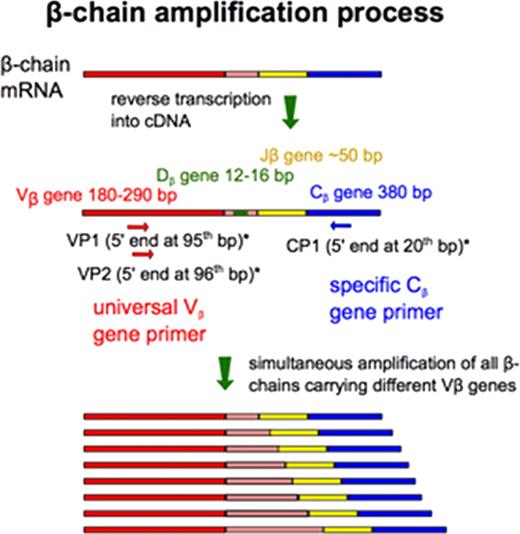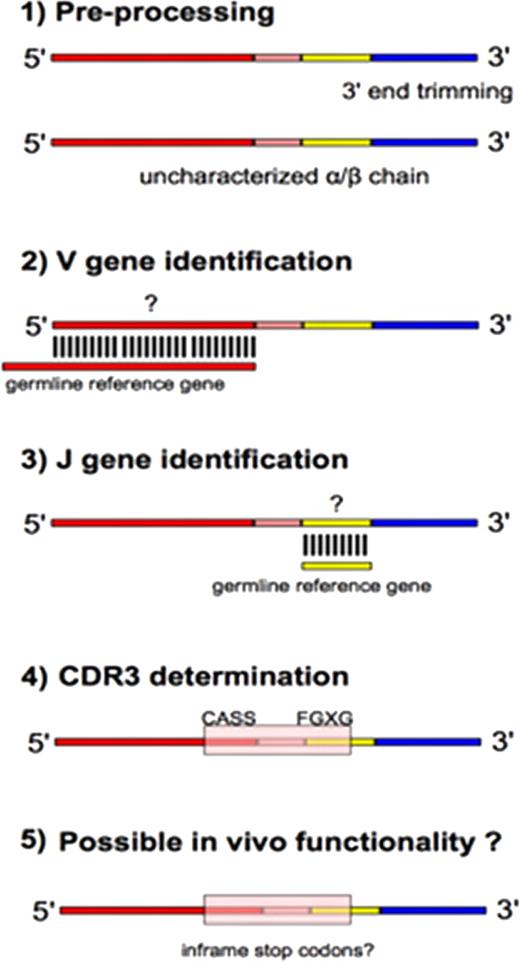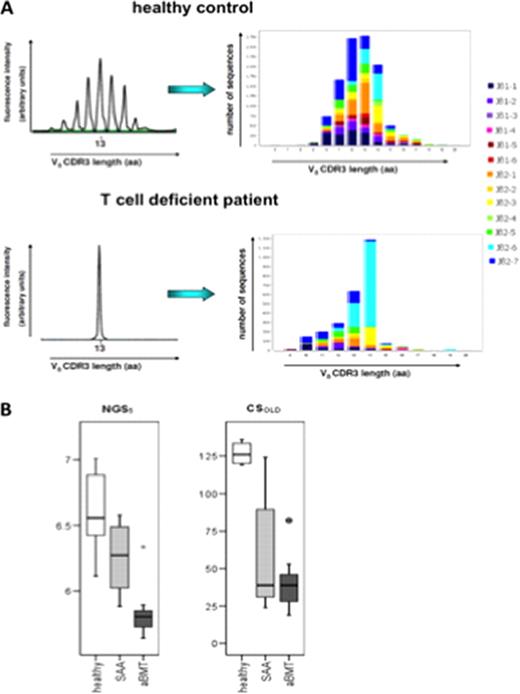Abstract
Abstract  2173
2173
The adaptive arm of the immune system - the T-cell compartment – may become compromised by inherited or acquired defects resulting in cancer, autoimmunity, or increased susceptibility to microbial infectious agents. A normal polyclonal T cell compartment comprises an estimated number of 2.5 × 10E7 individual T cell clones each expressing a unique antigen recognizing T cell receptor (TCR). The functionality of the T cell compartment is thus – at least partly - reflected by TCR sequence diversity. There is a medical need for rapid and robust diagnostic approaches that accurately monitor TCR diversity in patient samples, e.g. after bone marrow transplantation (BMT).
Previously, complementarity determining region 3 (CDR3) size spectratyping in TCR β-chain subfamilies (Vβ), an immunoscopic technique, was employed for the analysis of T cell diversity. However, spectratyping is limited to the analysis of CDR3 length polymorphisms only. Underlying diversity of TCR Vβ sequences of equal length remain undetected. Furthermore, spectratyping is time consuming and consequently data can only be interpreted with a delay of weeks.
To determine TCR diversity fast and accurately we developed next-generation-sequencing spectratyping (NGS-S), which employs high coverage, massive parallel Roche/454-sequencing of TCR Vβ-chain amplicons.
The TCR profiler identified on average 16165 of the input sequences as unique CDR3 sequences. Of these a mean of 9840 were predicted to be functionally rearranged.
Comparison of diversity detection by spectratyping and NGS-S (A). NGS-S, but not spectratyping, allows differentiation between diverse T cell pathologies (B).
Comparison of diversity detection by spectratyping and NGS-S (A). NGS-S, but not spectratyping, allows differentiation between diverse T cell pathologies (B).
Utilization of specific genes, the resulting amino acid composition of the CDR3 region as well as its length and overall diversity were integrated into a novel NGS-S score.
This score reliably differentiated not only between normal and T cell deficient samples, but also between the different T cell deficient groups (SAA and BMT) (Figure 3B). We conclude that NGS-S allows rapid and precise determination of TCR diversity in clinical samples.
No relevant conflicts of interest to declare.
Author notes
Asterisk with author names denotes non-ASH members.

This icon denotes a clinically relevant abstract




This feature is available to Subscribers Only
Sign In or Create an Account Close Modal